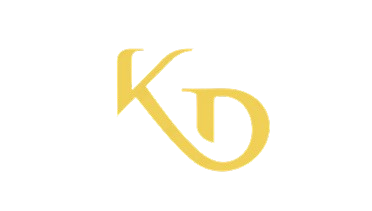
What do we know about “Network Society”?
Manuel Castells – a sociologist, frequently associated with information society and communication research – has written several books about the new form of community or movements in the shape of society. According to Manuel, a network society is “a society whose social structure is made up of networks powered by digital technology.” He believes that “we are passing from the industrial age to the information age.” In the 20th century, the rapid rise of information technology had been unleashing the most fundamental force of our time, hyperconnectivity, which is reshaping all areas of our technology, economy and social institutions according to a new set of rules. Face-to-face communications are no longer the only form of communication.
People can connect regardless of geographical distance via the global network of mass media, phone, fax and computers and are less and less linked by a shared history and shared face-to-face communications. The new form of communication leads to a new way of structuring the human-to-human relationship or what so-called society. Data is considered the new oil. Many people believe that we are on the cusp of a fundamental transformation in our political-economy, in how we choose to organize society concerning industry, organizations, and communities. Coming along with this emerging is unlimited potential for us to move forward:
Massive
Massive Communication. One individual can reach out to hundreds, thousands or even millions of people – offers a massive chance for individuals to grow and run their own business. This enormous communication potential also encourages the creators to create. Mass communication opens a gate for people to make their fortune, which seems like a fair game for whoever able to play.
Flat
The world is flat. Never before had the world became so reachable in the context of socialization.
However, this new form of society also adds new challenges:
-
Unpredictable corollaries: Identity thief, privacy, self-protection on the network are in concern. There is no clear line between social life and real life, cyber-bullying and cyber-attack – not unfamiliar with the new society – can cause severe damage to not only individuals but also a whole country. It raises an alarm of safety or self-protection in this new world.
-
Who has the power over mass media? – An unanswered question of this new world. The media seems to have the power in influencing people, since the number of people it can reach. Although the media are not the holders of power, they constitute an ample space where control is decided. Politics is now dependent on media in our new society, which is a challenge for politicians to continue their “shaping people’s mind” strategy.
-
Self-awareness and “fake news” phenomenon. Information in the network society is one-way from one to millions. Being conscious of the network is always a big challenge.
Adoption of Network Society: Estonia Model
Estonia is an example of how a country can follow the network society model. Their e-solutions have led to Estonia becoming one of the ones most developed digital societies. Estonia claimed their independence from the Soviet Union in 1991. As a result, Communism was then dismantled in Estonia and replaced with a market economy, open their opportunity in the international market.
Estonia started building its information society about two decades ago. Their goal is to build up a fully connected community where all services can be digitalized or accessible online. Each Estonian is provided with a digital ID – which enables them to identify themselves electrically. Digital ID makes e-life of Estonia happen. People can use their ID to access all personal information online, pay tax online or vote online, etc. Estonia was the first nation in history to offer internet voting in a nation-wide election in 2005. Health data is also made available for people, with the help of blockchain technology, the integrity of stored electronic medical records as well as system access logs are ensured.
Personal data of Estonians are centralized and make accessible to other services 1 (public sector or private sector). There are connections in almost every fields. In education, students can access their lectures and records, and the family is connected with schools and students closer than ever before. A new way of working is also formed with the help of internet. People can work remotely from their place as long as they have access to the internet and can connect with others. This remote-working style can also be a solution for reducing the burden of a big city because people can move to countryside or rural areas with the better living atmosphere while they still can have an excellent job from big cities.
In 2014, Estonia launched their new model of e-residency, which leads to a brand-new way of creating a business. Anyone from anywhere can register for a digital residency and will receive a government-issued digital ID and full access to conduct business globally. This entrepreneur-devoted convenience along with competent tax policy is Estonia’s weapon to attract investments from all over the world as well as to build a dynamic economy.
Besides all the benefits from digitalizing society, there are challenges in adapting to a network society model:
Identity Thief
The most critical concern of having every service linked to identity is “identity thief.” What happens if a hacker can steal digital ID from a civilian? Will he be able to access all sensitive data?
Attack vulnerability
Having a centralized system makes the country vulnerable from attack. The history of Estonia proved that this could happen – the cyber-attack in 2009 put Estonia in a hard time when their digital infrastructure had been damaged, and almost all services are in- operational.
Tax verification
Paying tax online is a convenient way for its people. However, from the government side, what is the best way to verify all the data in the tax form is verified? Especially in the case of “freelancers” – people who work freely without a contract or details record of income?
How about my country – VIETNAM?
Since the mid-1980s, through the Doi Moi reform period, Vietnam has made a shift from a highly centralized planned economy to a mixed economy that uses both directive and indicative planning through five-year plans. Over that period, the economy has experienced rapid growth. In the twenty-first century, Vietnam is in a period of being integrated into the global economy. Almost all Vietnamese enterprises are small and medium enterprises. Compared to developed countries, Vietnam economy is still young and undergoing developing state.
Recent years, along with the growth of the economy, efforts have been made to improve the management system and living standard, and this is the goal for building a modern society as well as competitive economics. Social infrastructure has continuously been improved. Applying the model of network society needs a long time and may not be the right solution at the moment due to the following challenges:
- Level of development is different between cities and also regions, and changes have to be applied gradually and differently according to the structure of each city.
- Cannot rush on making a total change because the infrastructure in Vietnam is not evenly developed throughout the whole country.
- Data of a person is separated and managed by different bodies. For example, one person can have various records in different hospitals. Hospitals don’t have a system to share all medical information of a patient. There is also no shared channel of personal identity between services. Most of the management process is involved with paperwork.
Changing people’s mindset is the biggest challenging. Any improvements made in the working process need extensive training and time for practicing.
It is impossible to change the social structure of the whole country at the same time, Vietnam started their movements by applying network model gradually in a big city. For example, in the biggest city of Vietnam – Ho Chi Minh City, some policies have been launched over the past few years. People can declare tax form online. This system is also linked to bank service which allows the citizen to pay online. Bank services are also linked to the electricity provider, which means it is possible to pay for electricity bill online by using the registered identity, etc.
Despite all those obstacles, efforts have been made, and improvements are recorded. I do think that it is promising for Vietnam to move forward to a networked society. However, the process and model must be different to fit in with the current social state and development strategy of the country.





